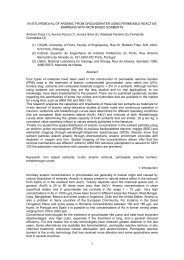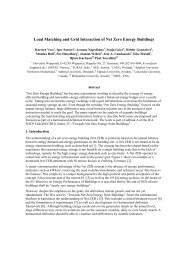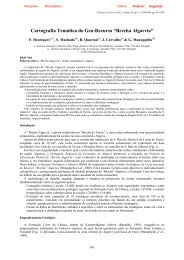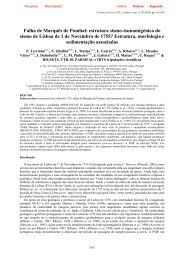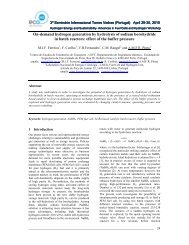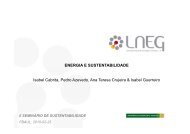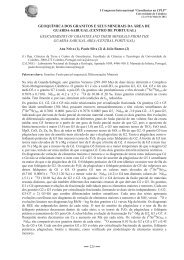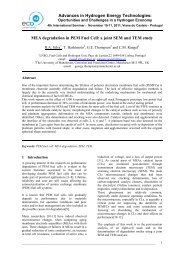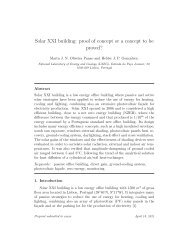Life Cycle Assessment of a Multi-Material Car Component
Life Cycle Assessment of a Multi-Material Car Component
Life Cycle Assessment of a Multi-Material Car Component
- No tags were found...
You also want an ePaper? Increase the reach of your titles
YUMPU automatically turns print PDFs into web optimized ePapers that Google loves.
Automotive Sector<strong>Car</strong> <strong>Component</strong>sIronproductionLimestoneproductionNitric acidproductionAmmoniaproductionEthyleneoxideproductionSteelproductionManganeseproductionSiliconproductionHDPEproduction<strong>Car</strong>bonblackproductionSulfuricacidproductionMethanolproductionSteel St14productionSteel 55Si7productionEPDMproductionPOMproductionWasherproduction(cutting)Springproduction(rolling)Poppetproduction(injection m.)Poppet-retainerproduction(injection m.)ZincproductionPhosphoricacidproductionImmersionzincPhosphating<strong>Component</strong>manufacturing(manual assembling)UseMetalsrecyclingPlasticslandfillTransportsElectricityproductionFuelproductionFig. 3: System boundaries <strong>of</strong> the main processes within the reference scenario2.4 Functional unitThe functional unit considered as the base for assessmentand comparative analysis <strong>of</strong> environmental impacts is a singlecomponent over 150,000 km <strong>of</strong> use. That component is assembledin a passenger petrol car with an average mass <strong>of</strong>1,080 kg and for 150,000 km <strong>of</strong> use [12]. The fuel consumption<strong>of</strong> the reference vehicle is 5.87 kg/100 km and theemissions are evaluated according to car (petrol) I – Idemat2001 (SimaPro 6.01) and include combustion and fuel production.The emissions associated just to the fuel combustionare presented in Table 3. The two car components underfocus within the reference and alternative scenarios areproduced in order to have the same life time as the car wherethey are assembled. Over that time period, the componentsdo not undergo any maintenance or repair.2.5 Allocation <strong>of</strong> the use phaseConsidering that the product under analysis is part <strong>of</strong> a carbrake system, it represents a percentage <strong>of</strong> the total car masslifetime and, consequently, it is responsible just for a fraction<strong>of</strong> the environmental impact caused by the whole carduring its lifetime.Table 3: Air Emissions associated with the fuel combustion, over 100 km,<strong>of</strong> a passenger petrol car with a petrol consumption <strong>of</strong> 5.87 kg l/100km [8]SubstanceQuantity (kg)CO 2 20CO 0.58SO 2 0.0029NO x 0.13N 2O 0.004Soot 0.0014VOC 0.083Based both on the fact that this LCA study refers to a lightweightdesign process and that the component mass is lessthan to 20% <strong>of</strong> the vehicle weight, from a scientific point <strong>of</strong>view, the incremental method with its mass orientation is anappropriate method for the allocation <strong>of</strong> a component's fuelconsumption [12]. Then, the fuel consumption <strong>of</strong> the referencecomponent (C ref.comp.) is:C ref.comp.= C ref.veh.x (M ref.comp./ M ref.veh.) x c (1)Int J LCA 12 (5) 2007 339





